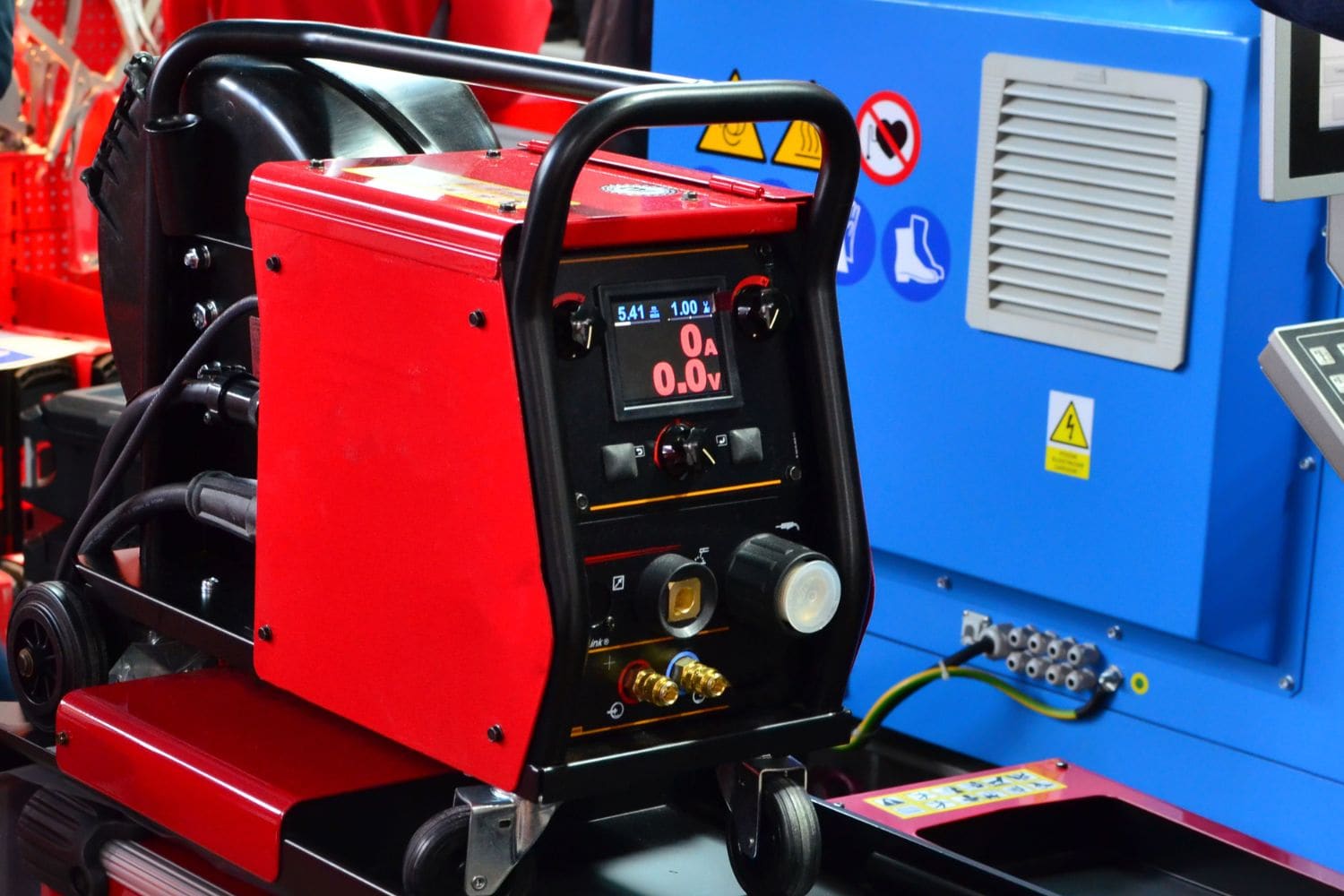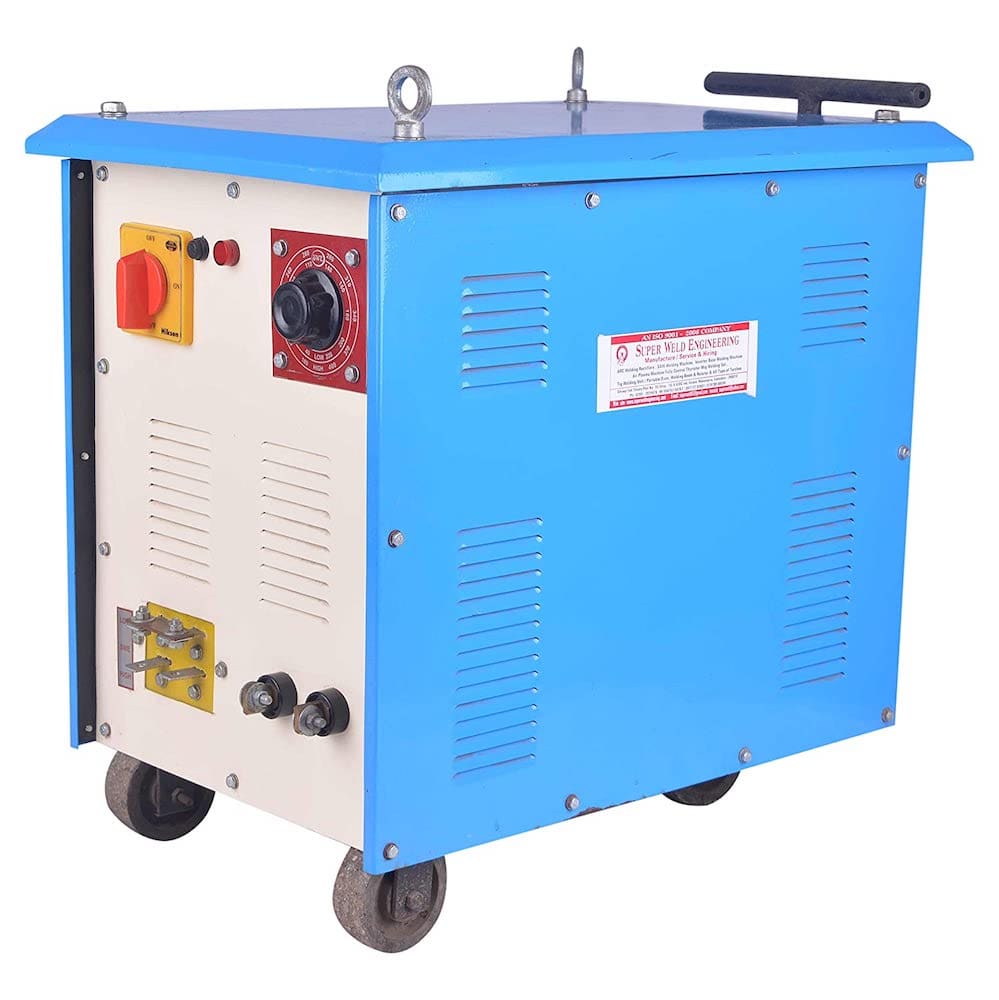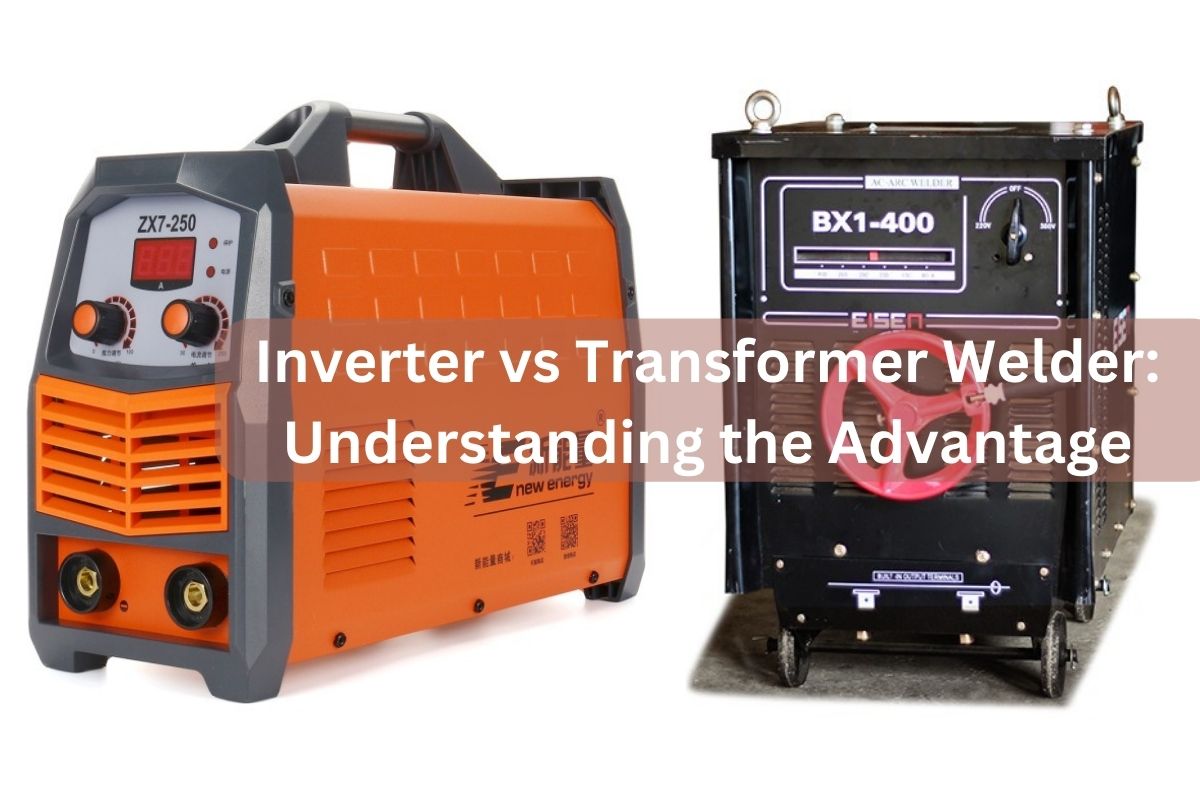Welders have been using welding machines for more than a century. Among the most popular machines are inverter and transformer welding machines.
Here, we will discuss the differences between inverter vs transformer welder.
What is an Inverter Welding Machine?

An inverter welder is an electric welding machine that converts AC (Alternating Current) power supply into DC (Direct Current) power supply.
Read Also : AC vs DC Welding: Which is the Best Fit for Your Needs?
The electrical output will later be used to melt and join metal pieces.
This welding machine uses electrical components to transform power into a low-voltage DC current, which is more stable.
The conversion occurs with the help of an electronic switch that turns the power on and off at a very fast speed.
Advantages and Disadvantages
An inverter welder weighs less than most traditional welding machines, so that you can carry it anywhere.
Its small size means you do not need much space to store and set it up.
I think you can use inverters for many different applications. Besides, they also allow you to adjust the settings easily.
As a result, you have more control over your work and can achieve a more favorable outcome.
While inverters are compact and versatile, they are not as durable as other welding machines.
Read Also : What is an Inverter Welder? Useful & Excellent Details!
What is a Transformer Welding Machine?

A transformer welder is a welding machine that converts high voltage, low frequency AC power supply into low voltage, high frequency AC output. You can adjust the output to suit your welding needs.
Transformers rely on two coils of wire wrapped around a magnetic core.
One of the coils is connected to the power supply while the other is connected to the electrode and the metal piece.
Advantages and Disadvantages
Unlike an inverter, a transformer welder has a bigger size. It takes more space than an inverter.
So, to set it up, you will need to clear a large area in your workspace.
A transformer also weighs more, so you want to keep it in one place rather than move it around. The machine also has limited setting controls.
You may have a higher chance of making mistakes with this machine.
One of the upsides of the transformer welding machine is that it can last long with little maintenance. It is also more durable and suits heavy duty tasks.
Read Also : Welding Transformer: Important Tap Settings Guide
Comparisons between Inverter VS Transformer Welder
Although both machines serve the same purpose, i.e. joining two or more metal pieces together, there are some key differences between inverter and transformer welders.
1. Uses
The light-weights of an inverter make this welding machine more portable than the other.
And thanks to its small size, an inverter does not take up too much space. This means an inverter is best for mobile jobs.
Due to its size and weight, a transformer welder may not be a good candidate for mobile users.
However, a transformer is a good pick when you look for a heavy duty, low maintenance welding machine.
2. Efficiency
Since you can quickly adjust the setting, you can work faster on your project with the inverter welding machine.
You can also adjust your weld according to the thickness of the material and improve the final look.
Your work with transformers could not be as fast since these machines do not use a new, speedy converter tool that inverters are equipped with.
Most inverter models can work better than transformers with only half of the amperage.
You don’t have to buy a generator or other appliances since your home socket will do just fine.
3. Control
Inverters ability to adjust welding settings not only gives you efficiency but also opens the door to various kinds of applications.
This is important because one day, you may need to handle different types of joints and materials and adjust the products to fit the requirements.
You can adjust a transformer welder too, but since it only has limited settings, you have limited options for working with this machine.
4. Maintenance
Transformers can thrive in any working situation, as dust and humid air do not affect them much.
Inverters, on the other hand, are not resistant to such things. And even if they are, their resistance is still no match compared to transformers.
Inverters maintenance includes protecting their electronic parts from damage.
And although they’re low maintenance, you will have to replace the transformer oil and keep the machines clean.
5. Performance
Transformers have a good arc, but inverters have a better one.
This is because the arc the inverters produce is more stable and consistent. The transformers arc tends to fluctuate and has some other issues.
Inverters have better control over their power conversion unit, giving them a more reliable voltage and a stable arc.
6. Life Expectancy
In the U.S., there are probably thousands of decades old transformer welding machines that are still working well.
It says something about the machines durability and long life expectancy.
While the transformers have strong evidence about their durability, you will find it hard to prove inverters can last as long because the technology is quite new.
Transformer welding machines have existed since the 1930s, while inverters only came into existence in the 1990s.
7. Stick Welding Test
Inverters various features allow you to perform better stick welding. You can get a better arc start and stability with these machines.
With more traditional technology, you will find it trickier to perform stick welding.
The adjustment settings the inverters have to enable you to manage the output.
This way, you can better control your work and have better performance.
Read Also : Welding Porosity: What It is, Causes and How To Avoid
8. Cost
When it comes to the upfront payment, transformers are a lot cheaper than inverters.
However, if you consider the overall cost of usage over time, inverters are cheaper than transformers.
Inverters consume less power and less welding gas because they have better arc stability.
The versatility of inverter welding machines means you don’t have to spend money buying other tools.
However, regarding repair costs, you may need to spend more money on your inverters than on transformers.
This is because, compared to transformers, inverter welders are more prone to damage.
Whichever machine you want to pick for your next welding project, make sure you have studied your welding needs beforehand.
Comparing an inverter vs transformer welder can be the first step in identifying what you need from a welding machine.


